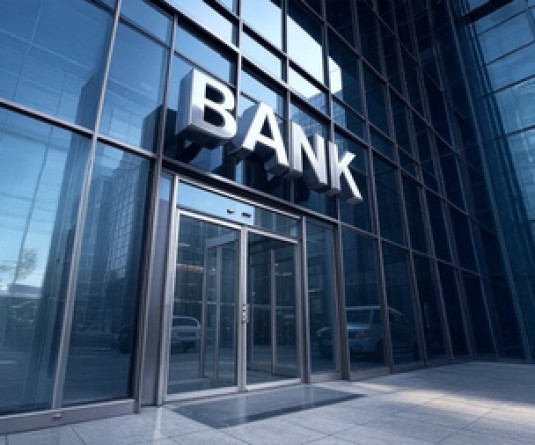
NEW DELHI/MUMBAI, August 2 (Reuters): It may not be quite a bottomless pit but the Indian government’s repeated injections of funds into the nation’s state-owned banks can appear to be going into one.
Bankers and credit rating agencies say they doubt the latest move by New Delhi to provide a further $10 billion in government money to the institutions that dominate India’s banking landscape will be enough for them to overcome massive bad debt problems. The expectation is that at some point in the not-too-distant future they will need more.
“Banks will need more capital infusions, improvement in governance - including consolidation - and cuts in government stakes over a period of time,” said Sonal Varma, chief economist at Nomura in Singapore.
Unless banks improve their governance and speed up settlement of corporate default cases it could prolong banking distress, according to N.R. Bhanumurthy, an economist at the National Institute of Public Finance and Policy, a government-funded think-tank.
“The past capital infusion has not been sufficient and a delay in addressing banking issues could prolong India’s economic recovery,” he said.
Prakash Agarwal, head of financial institutions at India Ratings and Research, said the latest infusion is unlikely to help bank lending much as it would be just sufficient to allow them to meet regulatory capital needs.
“Most of the state-owned banks have managed to grow only in single digits in the past few quarters and that is unlikely to change even with this round of capital addition,” said Agarwal.
Such glum talk is based on the experience of previous bailout attempts and the build-up of major stresses in the economy and in corporate India. Almost every week there is talk of another major company getting into financial difficulties or facing an investigation for fraud or other malfeasance.
A further failure to turn around the big government-owned banks will be bad news for the economy which has slowed to its lowest growth rate for five years - 5.8% - in the quarter ending March 31, partly because of the lack of new lending by both the banks and shadow lenders, such as housing finance firms. Prime Minister Narendra Modi’s government has targeted long-term annual growth rates above 8%.
“The stress in Indian banks has blunted monetary policy transmission while hitting the supply and cost of credit,” Nomura’s Varma added.
India’s finance ministry declined to comment for this story.
The latest cash infusion, unveiled as part of Finance Minister Nirmala Sitharaman’s maiden budget in early July, comes on top of about $36 billion that the government has already pumped into the struggling lenders over the past four years. It started with $3.6 billion in 2016, followed by more than $30.54 billion the following year, and has thrown in some top-ups along the way.
It has been a bad investment for taxpayers.
The government and the state-owned insurance group, Life Insurance Corp of India, have invested around 5.9 trillion rupees ($85.82 billion) in state banks during the last five years, but the current market valuation of those investments is only around 4.3 trillion rupees, according to data compiled by Fitch group’s India Ratings and Research. LIC alone invested nearly $4.34 billion in state banks, its data showed.
In the year to early July, India’s banks increased their lending by about 12% but economists say that isn’t enough because in the last financial year credit growth of shadow banks declined to 9% at the end of March 2019, from 30% a year ago.
The shadow sector had a market share of 30% in auto loans and more than 40% in home loans till December 2018. India needs bank credit growth of over 20% a year to reach 7-8% growth rates, said Bhanumurthy.
He said it could take about two years to bring down bad loans and boost bank lending to the levels seen during the boom years of 2006/11 when the economy grew at more than 8% a year.
It was the out-of-control lending during those boom years, however, that helped to create much of the banks’ bad debt burden as they funded high-risk infrastructure projects, including a number of power stations.
DEBT PROBLEMS MOUNT
There has been some progress. Risk controls at banks are slowly improving. Earlier this month, the government told parliament that state-run banks, which account for 60% of lending, cut their aggregate losses to $11.63 billion in the year ended in March from $12.40 billion in the previous year, while stressed assets declined by 14% to $114.72 billion in the same period. That is still 12.6% of total loans.
Significant further gains may be difficult in the near term given the disclosures of debt issues by major companies in recent weeks.
Housing loan provider Dewan Housing Finance Corp (DHFL), one of the larger shadow lenders, warned it may not survive as a going concern, and both state-owned Punjab National Bank, and Allahabad Bank alleged they were the victims of a major corporate fraud.
And then on Wednesday, authorities recovered the body of V.G. Siddhartha, the founder and largest shareholder of India’s biggest coffee chain, Coffee Day Enterprises, from a river two days after his disappearance. According to a letter purportedly written by Siddhartha, he was under immense financial strain.
The company’s shares have dropped more than 40 percent in the past three days.
Banks’ quarterly results released last month have also showed they are grappling with delays in settlement of bad loans in bankruptcy courts as a new law intended to speed up the process has been stymied by legal challenges.
Sunil Mehta, chairman and managing director of PNB, said higher levels of stressed assets had hit its ability to fund new projects and to cut interest rates.
Weakening economic growth, reflected in a fall in sales of autos, motorbikes and some other consumer goods amid sluggish domestic and global demand would also impact banks’ ability to expand lending.






